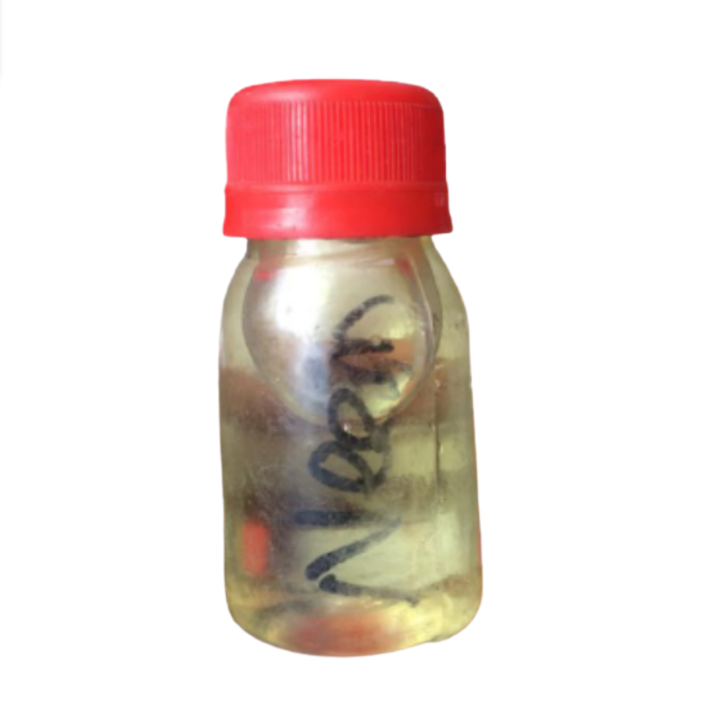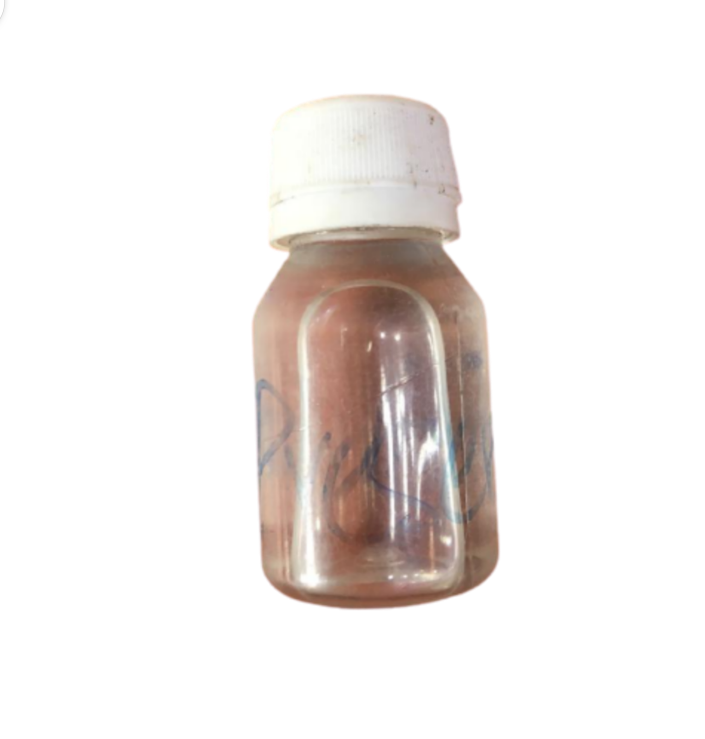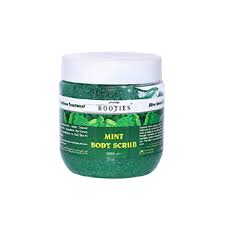- We're currently not processing orders at the moment. Please contact us through any of our communication channels for further enquiries.

Essential Neem Oil 50ml
₦2,000.00
Key Features
Skin Care: fights acne, eczema, psoriasis, brightens skin
Balances oily skin, clears dandruff, relieves itching
For all skin types, helps in dry skin cases
Anti-aging, also for hair growth
Antibacterial, Antifungal
Natural insect repellent
Add to other oils, lotions, shampoos or conditioners
Boosts the immune system
Neem oil is Extracted from the seed ofneem tree, neem oil is nature’s gift to mankind.
Incredibly bitter in taste with a pungent garlicky, sulfur-like smell, and varying in color from greenish brown, to yellowish brown to shades of red, the oil is host to a remarkable number of active ingredients, that offer powerful healing properties for many medical ailments.
Some of the top ingredients found in neem oil include vitamin E, nimbidin & nimbin compounds, carotenoids, linoleic acid, oleic acid, vitamin C, quercetin and the main compound azadirachtin, which is one of nature’s most powerful insect repellents.
These natural ingredients make neem oil a potent antifungal, antipyretic, antibacterial and anti-inflammatory making it a must-have addition in your medicine cabinet!
The name “Neem” has its roots in the Sanskrit word “nimba,” meaning “bestower of good health.” It has also been called “Ravisambha,” meaning “sun ray-like effects in providing health.” In Hindu texts, namely the Vedas, Neem is referred to as “Sarva Roga Nivarini,” meaning “one that cures all ailments and ills.”
Nicknamed the “Indian Lilac” and the “Margosa Tree,” and believed to have divine origins, the Neem tree is said to have been a safe haven for the Sun when, according to Indian mythology, it had to escape from the malicious powers of demons. Another Indian legend tells the tale of how a few drops of Amrita, meaning “ambrosia” or “the elixir of immortality,” fell onto the Neem tree while it was being carried to Heaven, thus further establishing its encounter with divinity. It was believed that a person who planted at least three Neem trees in his or her life would be guaranteed a place in Heaven.
Considered by the people of India to be sacred, the legendary Neem tree has come to symbolize good health and protection. As such, it was used to protect food and grains and acted as a natural pesticide and fertilizer. The venerated Neem tree has provided physical comfort in the form of shade against the harsh sun and it has naturally repelled bugs and insects for those sitting under its canopy. Used in medicine, its remedial properties have strengthened health and boosted immunity.
Its vast range of benefits, which far outweighs the usefulness of other trees, has made the Neem tree an integral aspect of Indian life and has come to be closely associated with the history of the Indian civilization.
The Azadirachta indica botanical, better known as the Neem Tree, is believed to have originated in either India or Burma. When it was discovered that the tree can thrive in any warm, dry regions, migrating Indians introduced it to other lands including Africa, Fiji, Mauritius, Malaysia, Indonesia, Thailand, and Cambodia.
Its resistance to droughts and its tolerance to heat are factors that contribute to its long lifespan of up to 200 years.
Throughout history, several elements of the diverse Neem tree were used to make herbal beauty treatments, insecticides, and first aid treatments for numerous skin ailments.
Unless exposed to severe droughts or frost, this evergreen tree’s leaves are available throughout the year. Although its seeds, or “nuts,” are largely known for yielding the beneficial carrier oil, the tree’s bark, leaves, roots, flowers, and fruits are also used to make medicine that was applied topically.
Sometimes these parts were ingested in the form of tea infusions, as suggested in the ancient Ayurvedic tradition, which is said to be comprised largely of formulations that involve the use of Neem in one form or another.
The tree’s twigs were used to maintain oral hygiene and the leaves were used in salads or were cooked along with vegetables. Neem gum was produced for dry throat lozenges, and Neem fruits were eaten for their sweet pulp.
Related
Only logged in customers who have purchased this product may leave a review.
Q & A
Ask a question
Your question will be answered by a store representative or other customers.
Thank you for the question!
Your question has been received and will be answered soon. Please do not submit the same question again.
Error
An error occurred when saving your question. Please report it to the website administrator. Additional information:
Add an answer
Thank you for the answer!
Your answer has been received and will be published soon. Please do not submit the same answer again.
Error
An error occurred when saving your answer. Please report it to the website administrator. Additional information:
Vendor Information
- Store Name: JMartonline
- Vendor: JMartonline
-
4.67 rating from 174 reviewsRated 4.67 out of 5 based on 174 customer ratings















Reviews
There are no reviews yet.